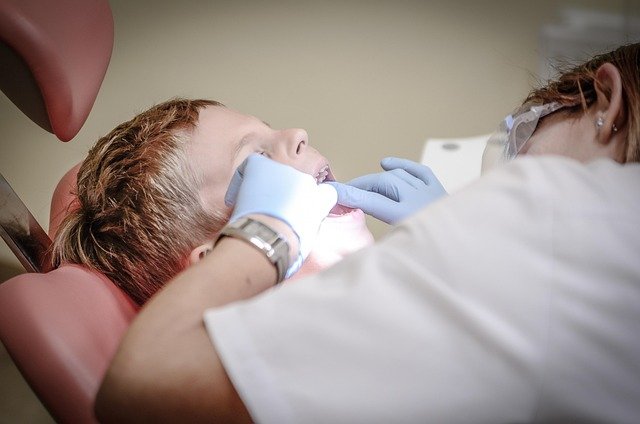Invisible Dentures: Relevance, Accessibility, and Comfort in 2025
Invisible dentures are gaining attention as a discreet and more comfortable alternative to traditional options. In 2025, many explore this solution based on personal needs, with a focus on improved design, varying price ranges, and user experiences. Learn what influences the choice and what to expect. Discover more in this article.

The field of prosthetic dentistry has undergone remarkable transformations in recent years, with invisible dentures representing one of the most significant advances in oral rehabilitation technology. These sophisticated dental appliances combine cutting-edge materials with innovative design principles to provide users with a nearly undetectable tooth replacement solution that prioritises both function and aesthetics.
What are invisible dentures and how do they work?
Invisible dentures utilise advanced materials and precision engineering to create prosthetic teeth that blend seamlessly with natural oral structures. Unlike traditional dentures that often feature visible metal clasps or obvious artificial components, these modern alternatives employ clear or tooth-coloured materials that virtually disappear in the mouth. The technology works through careful colour matching, translucent base materials, and strategically positioned retention mechanisms that eliminate the telltale signs of conventional dentures. The manufacturing process involves detailed impressions and digital scanning to ensure precise fit and optimal aesthetics.
What advantages do clear denture options offer over traditional ones?
Clear denture options provide numerous benefits compared to their traditional counterparts. The primary advantage lies in their aesthetic appeal, as the transparent or tooth-coloured materials eliminate the visibility issues associated with metal components. These modern alternatives also offer improved comfort through better-fitting designs that reduce pressure points and irritation. Additionally, clear dentures often feature enhanced retention systems that provide greater stability during eating and speaking. The materials used in these advanced prosthetics are typically more durable and stain-resistant, maintaining their appearance longer than conventional options.
How have comfortable false teeth evolved in recent years?
The evolution of comfortable false teeth has been driven by advances in materials science, digital technology, and biomechanical understanding. Recent developments include the introduction of flexible base materials that adapt better to oral tissues, reducing discomfort and improving fit. Computer-aided design and manufacturing (CAD/CAM) technology now enables precise customisation for each individual’s unique oral anatomy. Improved adhesive systems and retention mechanisms have also enhanced stability and comfort. Furthermore, the development of biocompatible materials has reduced allergic reactions and tissue irritation commonly associated with older denture materials.
What discreet dental solutions are available for those seeking invisible dentures?
Several discreet dental solutions cater to individuals seeking invisible dentures. Flexible partial dentures made from thermoplastic materials offer nearly invisible clasps and natural-looking bases. All-ceramic or zirconia-based prosthetics provide exceptional aesthetics with superior strength. Implant-supported invisible dentures combine the stability of dental implants with the discretion of advanced materials. Additionally, precision attachment dentures use hidden connectors that eliminate visible metal components while maintaining secure retention. These solutions can be customised to match individual tooth colour, gum shade, and facial characteristics for optimal naturalness.
How affordable are invisible dentures compared to traditional options?
The cost comparison between invisible and traditional dentures varies significantly based on materials, complexity, and provider expertise. Generally, invisible dentures command higher prices due to advanced materials and sophisticated manufacturing processes. However, the investment often proves worthwhile considering their longevity, comfort, and aesthetic benefits.
| Provider Type | Service Offered | Cost Estimation (GBP) |
|---|---|---|
| NHS Dental Practices | Basic Invisible Partials | £282 - £615 |
| Private Dental Clinics | Premium Clear Dentures | £800 - £2,500 |
| Specialist Prosthodontists | Custom Invisible Solutions | £1,500 - £4,000 |
| Digital Dental Labs | CAD/CAM Invisible Dentures | £1,200 - £3,200 |
Prices, rates, or cost estimates mentioned in this article are based on the latest available information but may change over time. Independent research is advised before making financial decisions.
The accessibility of invisible dentures has improved considerably as more dental professionals adopt these technologies and manufacturing costs decrease. Many practices now offer financing options to make these advanced solutions more attainable for a broader range of patients.
Future developments and considerations
As we progress through 2025, invisible dentures continue to evolve with emerging technologies such as 3D printing, smart materials, and artificial intelligence-guided design. These innovations promise even better fit, comfort, and aesthetics while potentially reducing costs. The integration of bioactive materials that promote oral health and the development of self-adjusting prosthetics represent exciting frontiers in this field.
The relevance of invisible dentures in modern dentistry cannot be overstated, as they address the primary concerns that have historically deterred individuals from seeking necessary tooth replacement. Their combination of discretion, comfort, and functionality makes them an increasingly attractive option for those requiring prosthetic dental solutions. As technology continues advancing and accessibility improves, invisible dentures are poised to become the standard rather than the exception in prosthetic dentistry.
This article is for informational purposes only and should not be considered medical advice. Please consult a qualified healthcare professional for personalised guidance and treatment.




